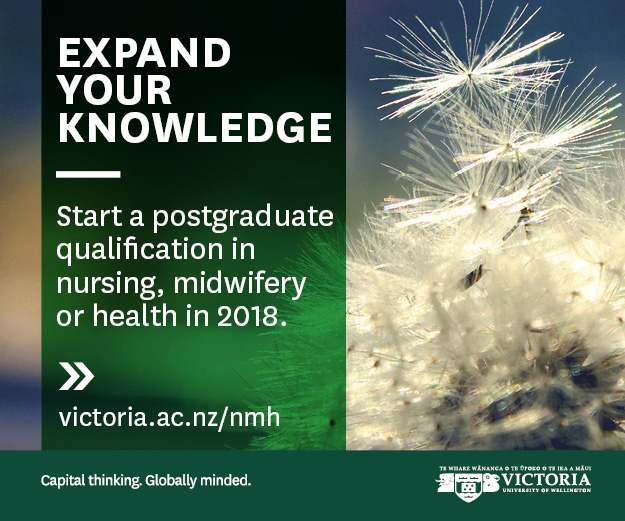Safe staffing software confirming nursing shortages in some wards at Hawke’s Bay Hospital has led to a $1 million boost in nursing staff.
The Hawke’s Bay District Health Board has announced it will spend more than $1 million over the next two years to create around 17 new full-time equivalent (FTE) registered nurse (RN) roles and about 10 FTE care associates (health care assistant) positions.
The announcement by DHB chief executive Kevin Snee is thought to be the first time that a DHB has announced a major boost to nursing staffing as a result of using the Care Capacity Demand Management safe staffing tools (see more about CCDM and the Safe Staffing Health Workplace Unit that created CCDM below).
Snee said hard work by all the DHB staff mean it was in the “enviable” financial position to be able to respond to the CCDM findings that were designed to establish the right nursing resource to meet patient demand.
Speeding up implementing the CCDM safe staffing system across all District Health Boards was a major component of the recent DHBs and New Zealand Nurses Organisation collective agreement negotiations.
Chris McKenna, the DHB’s chief nursing officer, said it had been almost two years of hard work to do the CCDM methodology groundwork to be able to analyse the FTE staffing needs of its medical and surgical directorates based on patient acuity data.
McKenna said the CCDM staffing analysis did confirm the nursing team’s “intuitive” judgment that some wards and units were understaffed.
“We knew we were challenged with RNs in intensive care (ICU) and we knew were challenged with RNs in our acute assessment area – and the analysis confirmed that those two areas were quite short.”
The analysis also found that coronary care and the cardiac ward were short and a surgical area. She said some work had been done several years ago in the medical wards and staffing had been increased in the medical directorates at that time.
Lisa Skeet, director of the Safe Staffing Healthy Workplaces (SSHW) Unit, said the DHB and its health union partners were to be congratulated and should be proud of their achievements.
“It is also excellent to see the DHB chief executive really backing having the staffing workforce right, which is one of the key things to ensuring positive patient outcomes.”
Skeet said Hawke’s Bay DHB was a pilot site for new web-based software developed by the unit which had made the process of calculating the safe staffing FTEs a lot more easy, accessible and straightforward than the previous spreadsheet-based system. “So DHBs can speed up their [safe] staffing calculations.”
McKenna said the additional nursing FTES would be equivalent to about 30 posts, because of nurses working part-time, with the majority of those posts to be filled in February next year and the remainder in the second half of the year.
At the same time the DHB, which has a primary nurse model of care, was also looking at increasing and upskilling its Care Associates (CAs).
McKenna said its current CA staff were either employed with a level 3 qualification (or trained on the job to that level) and it would now be introducing a new training programme to upskill its CAs, on top of the level 3 qualification, so they could take on extra low-level tasks to support RNs on the ward. These included basic patient mobility so CAs could take patients to the toilet and transfer patients to a chair.
“We are increasing their scope so we can release RN time to do the more complex, higher end-of-scope activities.”
Skeet said a further nine DHBs now had access to the FTE calculation software used by Hawke’s Bay and were looking to running their CCDM staffing analysis via that software. She said Hawke’s Bay had joined CCDM a little later in the piece but the DHB had really driven the process and as the pilot site for the new FTE calculation software had lead the way.
“This [Hawke’s Bay announcement] is an excellent example of true partnership in action and will certainly support quality patient outcomes, a positive work environment for staff and the best use of health resources,” said Skeet.
Hilary Graham-Smith, associate professional services manager of New Zealand Nurses Organisation (NZNO) also said the DHB was to be congratulated on the “outstanding progress” it had made. “NZNO is delighted to see the positive outcomes that will benefit patients, staff and the DHB as a whole.”
Skeet pointed out that the CCDM safe staffing FTE analysis would show up different trends in different DHBs. “In some wards gaps [in staffing] are identified but there are some areas where there are too many staff, there are also some areas where they’ve got the right number of staff but they are just at the wrong place at the wrong time,” said Skeet.
“So from the SSHW unit’s point of view the staffing methodology just provides a transparent reality of what is actually happening and what is actually required on the ward to provide the service they need for the patient demand and acuity coming through the ward door.
McKenna said the process had been very much team work between the DHB, the Safe Staffing Healthy Workplace (SSHW) Unit and the New Zealand Nurses Organisation. The DHB was now going on to carry out the analysis for other areas including paediatric, maternity and renal.
*CCDM AT A GLANCE
- At the end of last year 14 of the 20 DHBs were in different stages of implementing the CCDM system tools.
- The tools are built on a validated patient acuity tool (to date all are using TrendCare) and include calculating the safe staffing level required in a ward or unit based on historic and current patient acuity demand and turnover.
- The CCDM system has been developed by the Safe Staff Healthy Workplaces (SSHW) Unit.
- The joint DHB-NZNO unit was created in 2007 following the joint SSHW Committee of Inquiry held in 2005-2006.
- The inquiry was held after NZNO agreed to drop pursuing mandated nurse-to-patient ratios during the negotiations leading to the historic ‘pay jolt’ in 2005.





















[…] on a ward to deliver safe, quality patient care. (See recent Nursing Review story on DHB announcing nursing staff boost due to […]